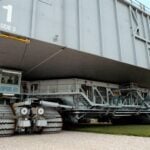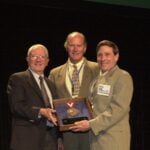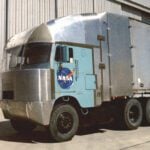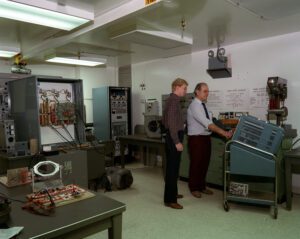Power Factor Controller
Inducted In: 1988, Transportation
Millions of alternating current motors are in use throughout industry and in consumer products. Much of the power they consume, however, is wasted because electricity is fed to homes and factories at a fixed voltage level which is not required constantly by motor-driven devices and equipment, especially when in an idling mode. The cumulative power wasted, considering the millions of electric motors in service, is enormous. In order to conserve energy in aerospace electromechanical systems, where power sources must be efficiently maximized, the Power Factor Controller (PFC), was developed at the NASA Marshall Space Flight Center. The PFC senses shifts in the relationship between voltage and current and matches those factors with the loading forces on motors during their operation.
Think of the escalator when fully occupied with people it places a maximum load on the motor drive, thus requiring maximum balance between voltage and current; however, when unoccupied it does not require the same level of power. Early tests showed that the PFC could trim power usage by six to eight percent under normal motor load conditions, and by as much as 65 percent when the motor was idling. With such tremendous energy saving potential, the PFC quickly became one of NASA’s most widely adopted technologies.
Related Technologies

Advanced Lubricants
Inducted In: Transportation
[embed]https://www.youtube.com/watch?v=LN_GoNVAJKc[/embed] In the mid 1990s NASA discovered an environmental problem with the material that was being used to lubricate the massive track system on the shuttle mobile launch transporter. Not surprisingly the lubricant requirements are rather extraordinary for this transporter.…

Digital Latching Valve
Inducted In: Transportation
NASA requires efficient and lightweight valves for controlling thrusters in spacecrafts. While at Bell Aerospace in the 1960s, Eddie Sturman developed a very efficient valve control actuator that consumed little energy. His work resulted in five patents and systems extensively…

Aerodynamic Vehicle Design – Space Age Design on the Highways
Inducted In: Transportation
Vehicle design has seen radical improvements thanks in large part to NASA aerodynamics and fluid dynamics research. As vehicles move down the road at highway speeds, they must ‘push’ the air in front of them out of the way. Large…

